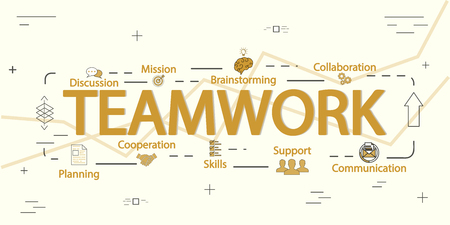1. Understanding the Functional (Skills-Based) Resume Format
When applying for jobs in the United States, the way you present your experience and abilities can make a big difference. A functional or skills-based resume is a popular format, especially for people who want to highlight what they can do rather than just where theyve worked. Let’s break down what makes this resume style unique, how it differs from the more traditional chronological format, and why it can be so effective in the U.S. job market.
What is a Functional (Skills-Based) Resume?
A functional resume focuses on your skills and qualifications instead of your work history. This format puts your strongest abilities front and center, making it easier for employers to see what you bring to the table—even if your job titles or previous employers aren’t directly related to the position you’re applying for.
Key Features of a Functional Resume
- Skills First: Highlights your core skills at the top of the resume.
- Grouped Abilities: Skills are often grouped into categories that match the job requirements.
- De-emphasizes Timeline: Your work history is included, but listed briefly after your skills section.
- Ideal For: Career changers, recent graduates, or anyone with gaps in employment.
Functional vs. Chronological Resumes: What’s the Difference?
| Functional (Skills-Based) | Chronological | |
|---|---|---|
| Main Focus | Skills & Competencies | Work History (by date) |
| Layout | Skills sections first, short job list later | Job titles and employers listed in order |
| Best For | Career changers, gaps in employment, varied backgrounds | Consistent career path, upward progression |
| Pitfalls | Lacks detailed timeline; may raise questions if not well-written | Might hide transferable skills if jobs are unrelated |
Why Is a Skills-Based Resume Effective for the U.S. Job Market?
The American job market values practical skills and adaptability. Many employers use software called Applicant Tracking Systems (ATS) to scan resumes for specific keywords—often related to skills. By using a functional resume, you can target these keywords and showcase your abilities in areas like leadership, communication, technical expertise, or problem-solving. This approach works especially well if:
- You’re changing industries and want to show how your existing skills apply.
- You have gaps in your work history but strong relevant abilities.
- Your experience is diverse and not easily summarized by job titles alone.
Quick Tips for Creating a Skills-Based Resume
- Review the job description and identify key skills needed.
- Create skill categories that match those requirements (like “Project Management,” “Customer Service,” or “Technical Skills”).
- Add bullet points under each category to give real examples of how you’ve used those skills.
- Mention your work history briefly at the end—just company name, role, and dates.
2. Identifying and Showcasing Your Core Skills
Analyze Job Descriptions Like a Pro
The first step in creating a strong skills-based resume for the U.S. job market is learning to break down job descriptions. American employers use specific keywords and phrases to describe what they need, so pay close attention! Read several postings for your target position and highlight repeated skills, certifications, and tools. This helps you understand what’s most important for the role and what language to use in your resume.
Common Keywords You Might Find
| Job Posting Phrase | What It Means |
|---|---|
| Strong communication skills | Can explain ideas clearly in speaking and writing |
| Proficient in Microsoft Office Suite | Knows how to use Word, Excel, PowerPoint, etc. |
| Problem-solving abilities | Able to find solutions and troubleshoot issues |
| Team player | Works well with others and contributes to group success |
| Time management | Can organize tasks and meet deadlines effectively |
Pinpoint Your Transferable Skills
No matter your background, you have valuable skills that American employers appreciate. Transferable skills are abilities you’ve developed in one context (like school, volunteering, or previous jobs) that apply to the new job you want. These might include leadership, organization, customer service, or technical know-how. Make a list of your top strengths by thinking about your experiences—where did you shine? What do people often ask you for help with?
Examples of Transferable Skills to Highlight
- Leadership (led projects or teams)
- Customer Service (helped clients or customers)
- Data Analysis (worked with numbers or reports)
- Adaptability (managed change or learned new tools quickly)
- Bilingual Communication (speak more than one language fluently)
Group Your Strengths Strategically
Unlike traditional resumes that focus on work history, a functional resume puts your abilities front and center. Create clear skill categories as section headers—think “Project Management,” “Technical Skills,” or “Interpersonal Abilities.” Under each header, use bullet points to show real examples from your past experience that prove you have these skills. Use action verbs like “coordinated,” “implemented,” or “improved” to start each point.
Sample Skill Grouping Format:
| Skill Category | Description Example |
|---|---|
| Project Management | Coordinated a team of 5 to launch a new product feature on schedule. |
| Technical Skills | Troubleshot software issues using SQL and improved system uptime by 15%. |
| Customer Relations | Handled over 50 client inquiries weekly with a 98% satisfaction rate. |
This approach helps recruiters see your strongest qualities right away, making it easier for them to match you with the right opportunities in the U.S. job market.

3. Writing Compelling Skills-Based Summaries
Highlighting Key Skills that Match the U.S. Job Market
When creating a skills-based (functional) resume for jobs in the United States, it’s important to showcase your abilities in a way that aligns with what American employers expect. This section should be front and center on your resume—right after your contact information and professional summary. Focus on 4-6 core skill areas that directly relate to the job you’re applying for. Avoid generalities like “hard-working” or “team player.” Instead, use specific technical or soft skills relevant to the position.
Best Practices for Crafting Targeted Skill Sections
- Read the job description carefully: Identify keywords and required skills.
- Tailor your skills section: List skills that match those requirements.
- Group similar skills: Use categories if you have many related abilities (like “Communication Skills” or “Technical Proficiency”).
- Be concise: Use bullet points for easy scanning.
Sample Skills Section Structure
| Skill Area | Description/Example | U.S.-Style Action Verb |
|---|---|---|
| Project Management | Managed cross-functional teams to deliver projects ahead of deadlines and under budget. | Led, Coordinated |
| Data Analysis | Analyzed large datasets to identify trends and improve business decisions. | Analyzed, Evaluated |
| Customer Service | Resolved client issues efficiently, resulting in a 20% increase in customer satisfaction scores. | Resolved, Enhanced |
| Sales Strategy | Developed sales pitches that increased new client acquisitions by 30% within one year. | Developed, Increased |
Incorporating Measurable Achievements
The U.S. job market values results-oriented resumes. Whenever possible, add numbers or outcomes to your skill descriptions. For example, instead of “Good at training new staff,” write “Trained 10+ new team members each quarter, reducing onboarding time by 25%.” This shows employers exactly how you’ve made an impact.
The Power of U.S.-Style Action Verbs
Avoid starting your skill statements with passive phrases (“Responsible for,” “Tasked with”). Use dynamic verbs commonly recognized by U.S. hiring managers. Here are some examples:
| Bland Phrase | Strong U.S.-Style Verb Alternative |
|---|---|
| Helped with projects | Spearheaded projects |
| Took care of customers | Served customers; Resolved issues |
| Tried new ideas | Implemented innovative solutions |
| Told others what to do | Directed teams; Supervised staff |
| Makes reports | Generated detailed reports; Presented findings |
Aim for Clarity and Impact
Your skills-based summary should be easy to read and quickly show why you’re a great fit for the role. By using targeted skills, measurable achievements, and strong action verbs, you’ll make a strong impression on U.S. hiring managers.
4. Tailoring Your Resume for U.S. Employers
Understand the Importance of Customization
In the U.S. job market, a one-size-fits-all resume rarely works. Employers expect you to tailor your resume for each specific job you apply for. This means highlighting skills and experiences that match the job description and demonstrate your fit for the company. Customizing your resume shows that you have taken the time to understand what the employer needs and that you are genuinely interested in the position.
Using Relevant Keywords
Many companies in the U.S. use Applicant Tracking Systems (ATS) to screen resumes before a human ever sees them. These systems scan for keywords that match the job posting. To increase your chances of getting noticed, review the job description carefully and include important keywords related to required skills, qualifications, and industry terms throughout your resume.
Examples of Keywords Based on Job Roles
| Job Role | Relevant Keywords |
|---|---|
| Project Manager | Project coordination, stakeholder management, budgeting, risk assessment, Agile, Scrum |
| Data Analyst | Data visualization, SQL, Excel, data mining, reporting, statistical analysis |
| Marketing Specialist | Content creation, SEO, campaign management, social media strategy, analytics |
| Customer Service Rep | Client relations, conflict resolution, CRM software, communication skills, problem-solving |
Aligning with U.S. Workplace Expectations and Company Culture
U.S. employers often look for certain qualities such as initiative, teamwork, adaptability, and effective communication. Researching the company’s values can help you reflect these traits in your resume. For example:
- If a company values innovation, mention times you introduced new ideas or improved processes.
- If teamwork is important to them, highlight your experience collaborating with cross-functional teams.
- If they emphasize customer focus, share examples of how you exceeded customer expectations.
Tips for Showcasing Cultural Fit:
- Read the company website: Pay attention to their mission statement and core values.
- Check employee reviews: Sites like Glassdoor can give you insight into company culture.
- Mimic their language: Use similar words or phrases from their job postings and website when describing your own experience.
A well-tailored skills-based resume not only highlights your abilities but also shows employers that you understand what matters most to them and their organization.
5. Formatting, Design, and Key Dos and Donts
Layout: Keep It Simple and Organized
A skills-based (functional) resume should have a clean and logical structure so hiring managers can quickly scan your key strengths. In the U.S., recruiters often spend less than 10 seconds on a first glance. Use clear section headings, consistent spacing, and bullet points for easy reading. Place your name and contact information at the top, followed by a summary, skills sections, work history, and education.
Recommended Resume Layout Order
| Section | Order |
|---|---|
| Name & Contact Info | Top of the page |
| Professional Summary | Below contact info |
| Key Skills/Competencies | Prominently after summary |
| Work Experience (Brief) | After skills section |
| Education & Certifications | End of resume |
Font Choice: Professional and Readable
The best fonts for U.S. resumes are easy to read both digitally and in print. Stick with classic options like Arial, Calibri, or Times New Roman in 10-12 point size. Avoid using decorative or script fonts—they can make your resume look unprofessional.
Font Dos and Donts Table
| Do Use These Fonts | Dont Use These Fonts |
|---|---|
| Arial Calibri Times New Roman Verdana Tahoma |
Comic Sans Papyrus Brush Script Impact Courier New (for body text) |
Length: One Page Is Best
If you have less than 10 years of experience, keep your resume to one page. For senior professionals or those with extensive relevant experience, two pages are acceptable—but never more than that for most U.S. jobs. Be concise; only include information directly related to the job youre applying for.
Key Dos and Donts for U.S. Functional Resumes
| Dos | Donts |
|---|---|
| – Use bullet points to list achievements – Tailor skills to each job description – Include quantifiable results where possible – Proofread for typos and errors – Save as PDF unless instructed otherwise |
– Use photos or personal graphics – List irrelevant jobs or skills – Include personal details (age, marital status) – Use bright colors or fancy borders – Overcrowd the page with text |
Common Formatting Mistakes to Avoid
- Avoid using tables for layout (except for simple lists)—they may not parse well in online application systems (ATS).
- No headshots or personal images—these are not standard in the U.S.
- No confidential info like Social Security numbers.
- No long paragraphs—break content into bite-sized bullet points.
- No jargon or unexplained acronyms; use plain English.
Your Resume Should Stand Out—For the Right Reasons!
A well-formatted functional resume highlights your most marketable skills while making a strong visual impression. Stick with a simple design, professional fonts, and a logical flow to ensure hiring managers notice what matters most about you.


